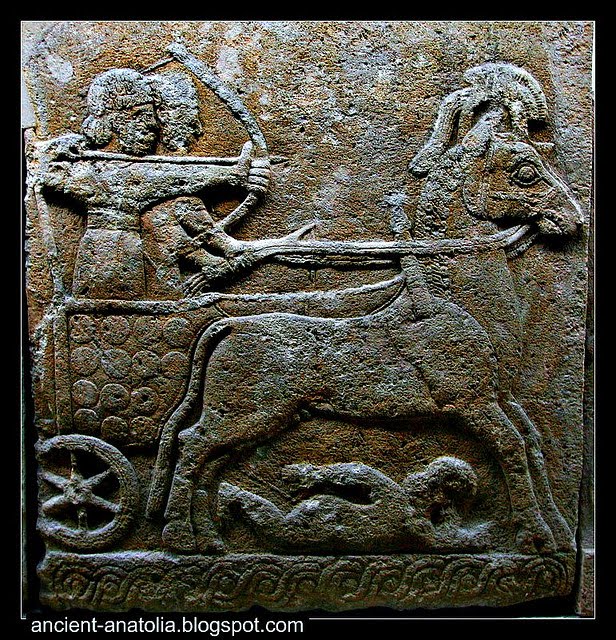
The oldest testimony of chariot warfare in the Ancient Near East is the Old Hittite Anitta text (18th century BC), mentioning 40 teams of horses at the siege of Salatiwara.
The Hittites were renowned charioteers. They developed a new chariot design, which had lighter wheels, with less spokes. The Battle of Kadesh in 1299 BC is likely to have been the largest chariot battle ever fought, involving some five thousand chariots.
PHOTO: Hittite Archer on a Chariot, originally uploaded by voyageanatolia.blogspot.com.